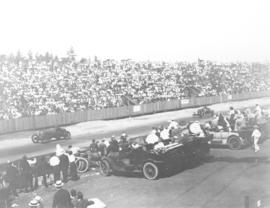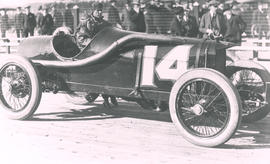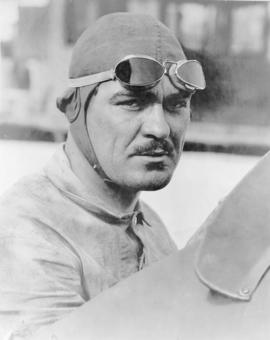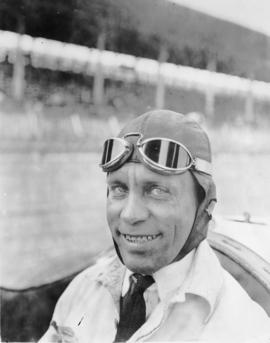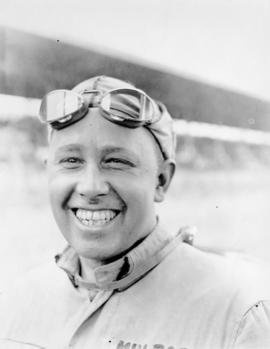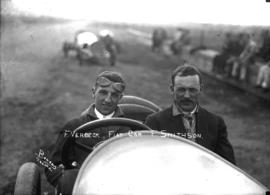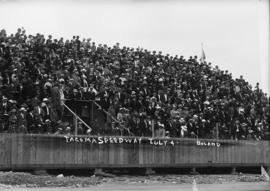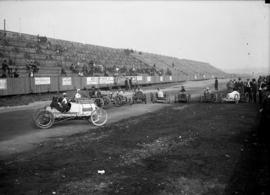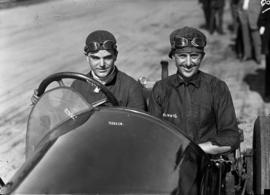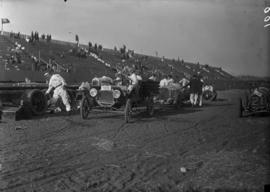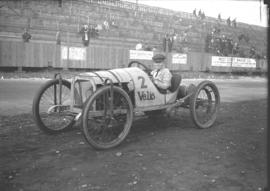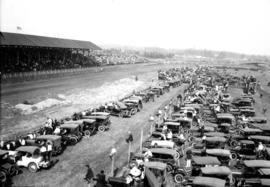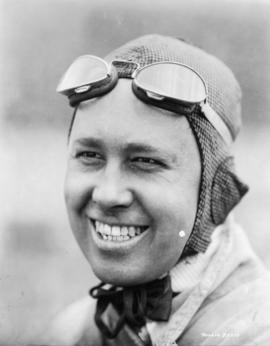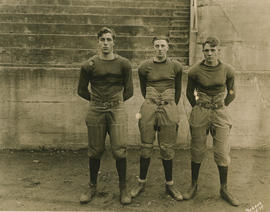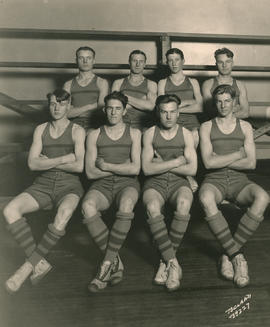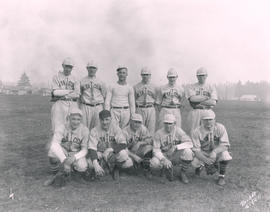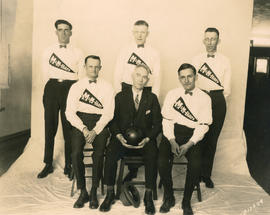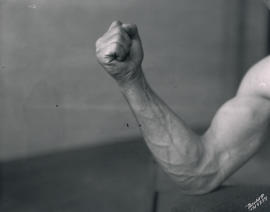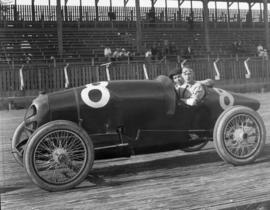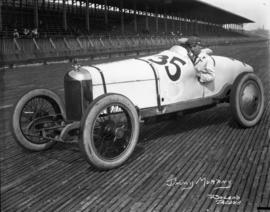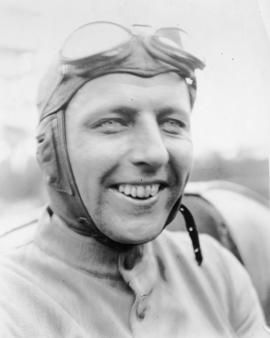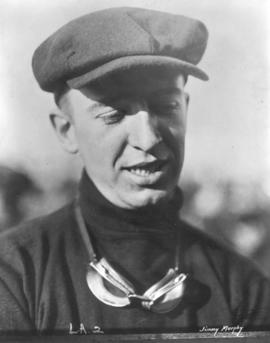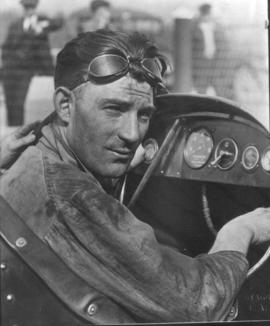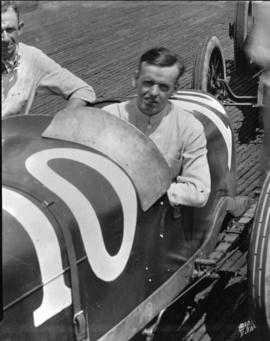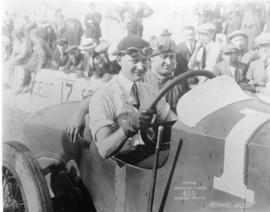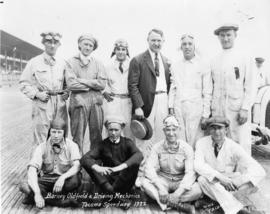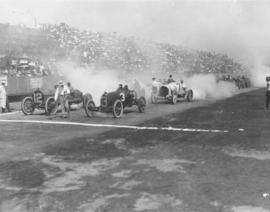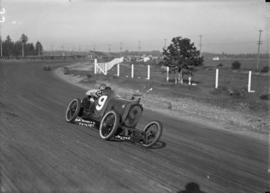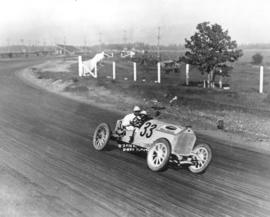- Item
Part of Marvin Boland Photographs
Tacoma Speedway pre-1915. The track seems to still be a dirt track which means this unidentified race occurred before 1915, the first year of the new "lattice" board track. At this frozen moment in time, car #4 leads car #3 by several lengths. The grandstands are packed with spectators during probably the Montamara Festo races which occurred during the 4th of July holiday period at the Tacoma Speedway. People on the other side of the track got a very close view of the race along with crewmen for the various drivers. Note the pile of narrow tires that have already been changed or are awaiting changing. The Tacoma Speedway had a short but action packed history from 1912 to 1922. Many world class racers including Barney Oldfield, Teddy Tetzlaff, Grover Ruckstell, Eddie Pullen and Cliff Durant competed for prize money and trophies.
Tacoma Speedway (Lakewood); Racetracks--Lakewood--1910-1920; Automobile racing--Lakewood--1910-1920; Racing automobiles--1910-1920; Sports spectators--Lakewood; Grandstands--Lakewood;
